Critical Evaluation of EIA Procedures in Western Australia: Audit
VerifiedAdded on 2023/01/19
|6
|822
|57
Report
AI Summary
This report critically evaluates the Environmental Impact Assessment (EIA) process in Western Australia, examining its legal basis, coverage, alternatives, screening, scoping, report preparation, review, monitoring, mitigation, consultation, and cost. The assessment aligns with the assignment brief, focusing on stakeholder engagement within the EIA process. The report uses the Wood Model to analyze the EIA, addressing weaknesses in scoping procedures and highlighting the importance of alternatives and effective stakeholder participation. It references key literature to support its analysis. The report also discusses the EIA's role in environmental sustainability, emphasizing the need for organized re-evaluation and the importance of considering both activities that directly degrade the environment and those that do not. The report provides a detailed overview of the EIA process, including the crucial aspects of report preparation, review, and the involvement of stakeholders, providing a comprehensive analysis of the current EIA procedures in Western Australia. The report also provides a brief overview of Strategic Environmental Assessment (SEA).
1 out of 6
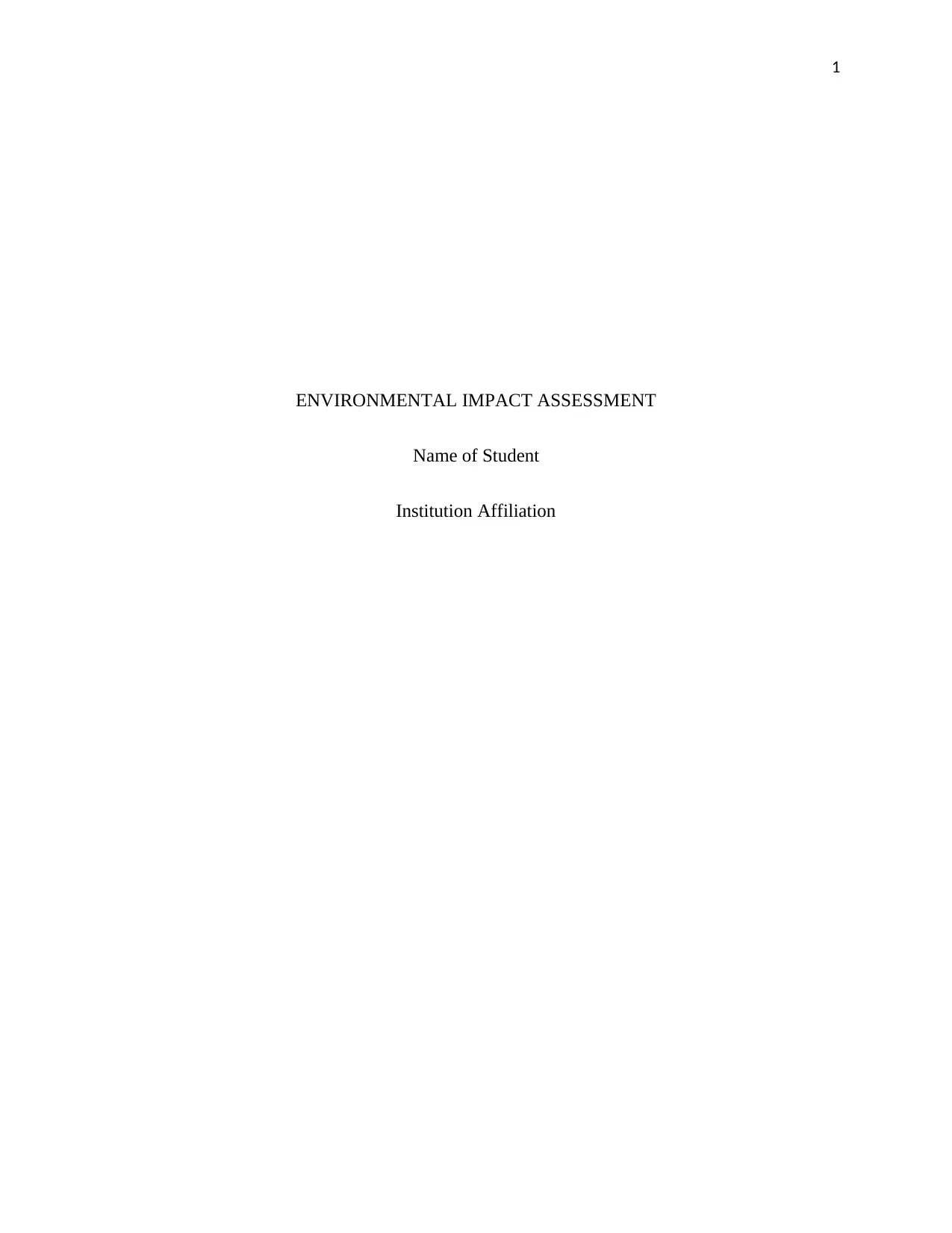
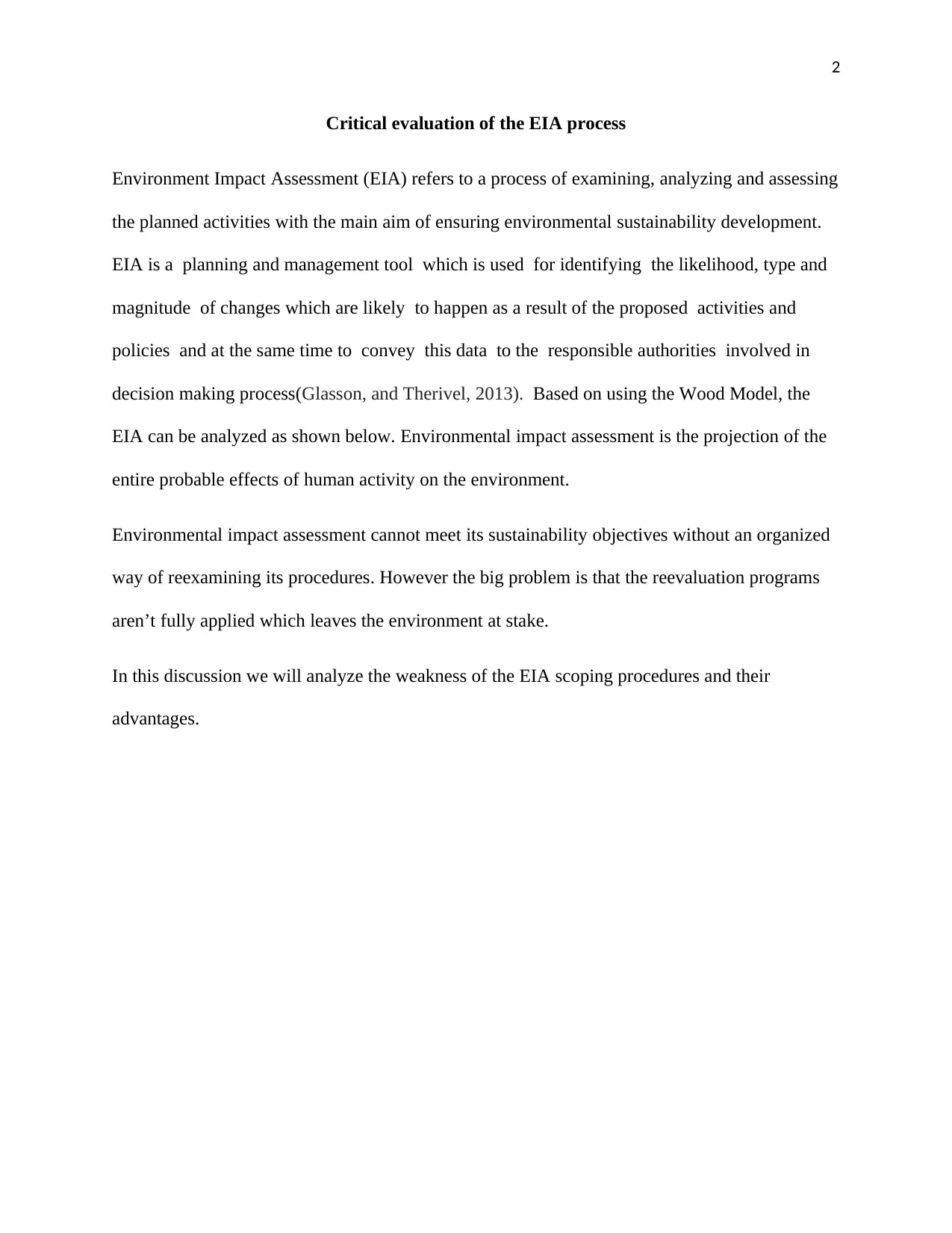
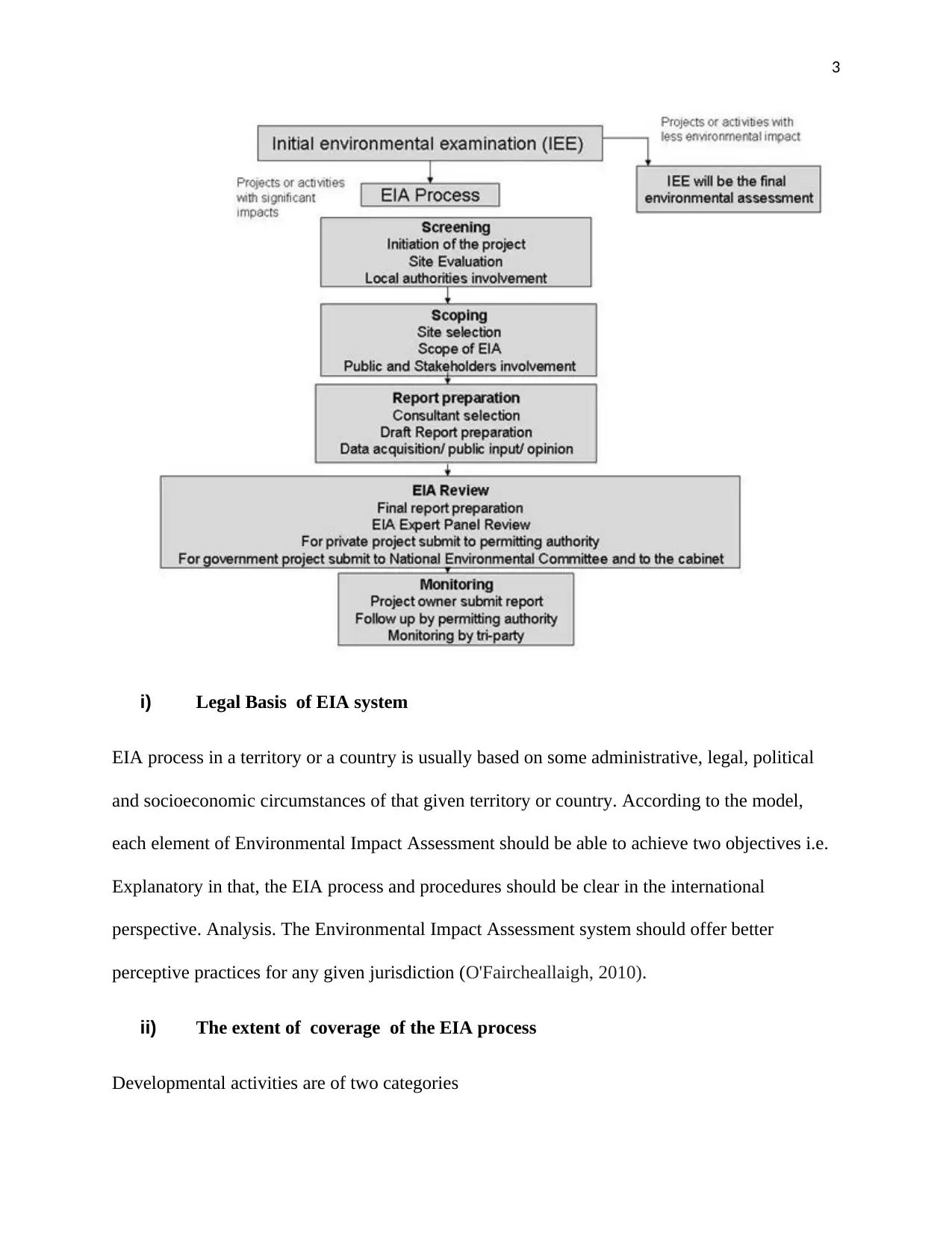

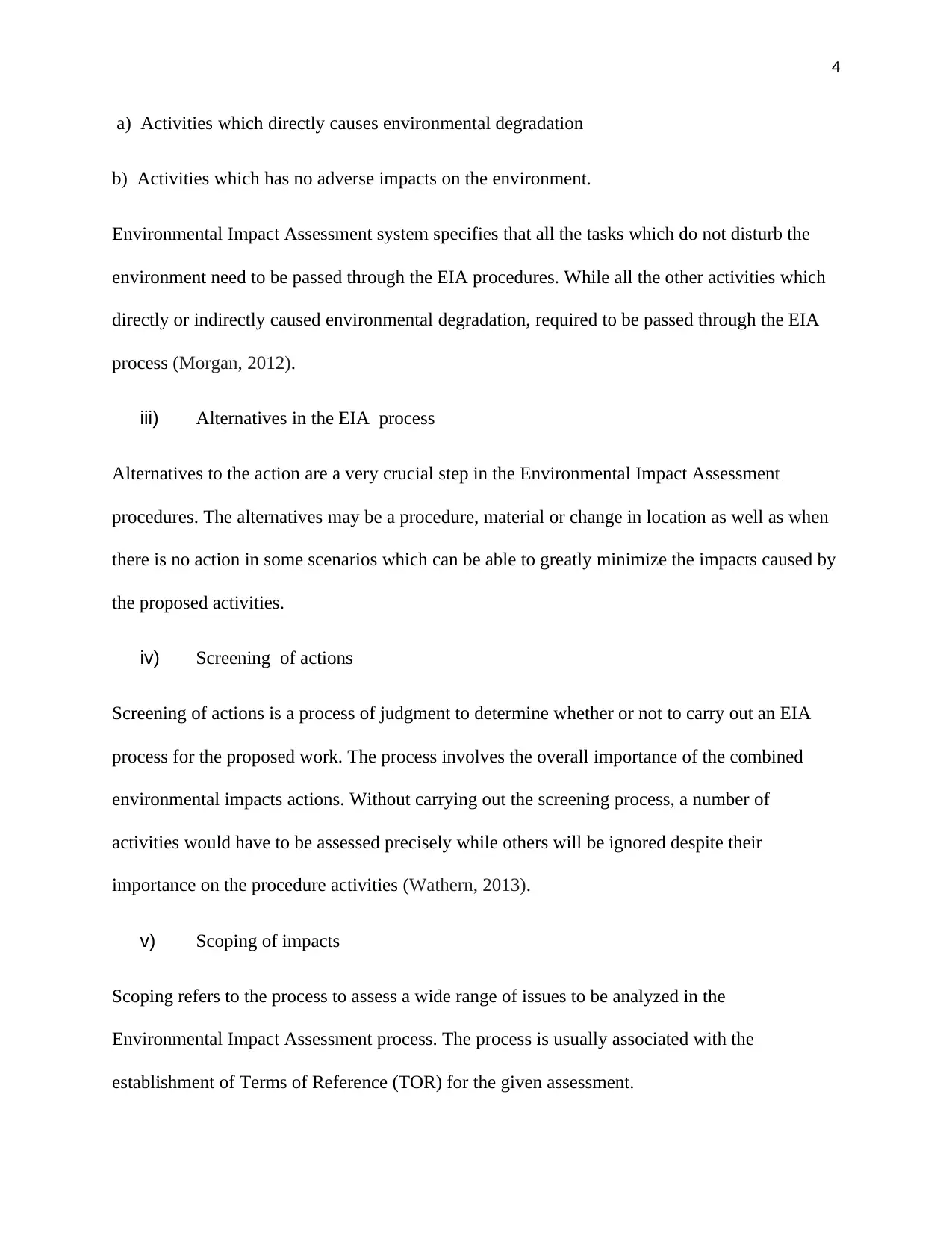
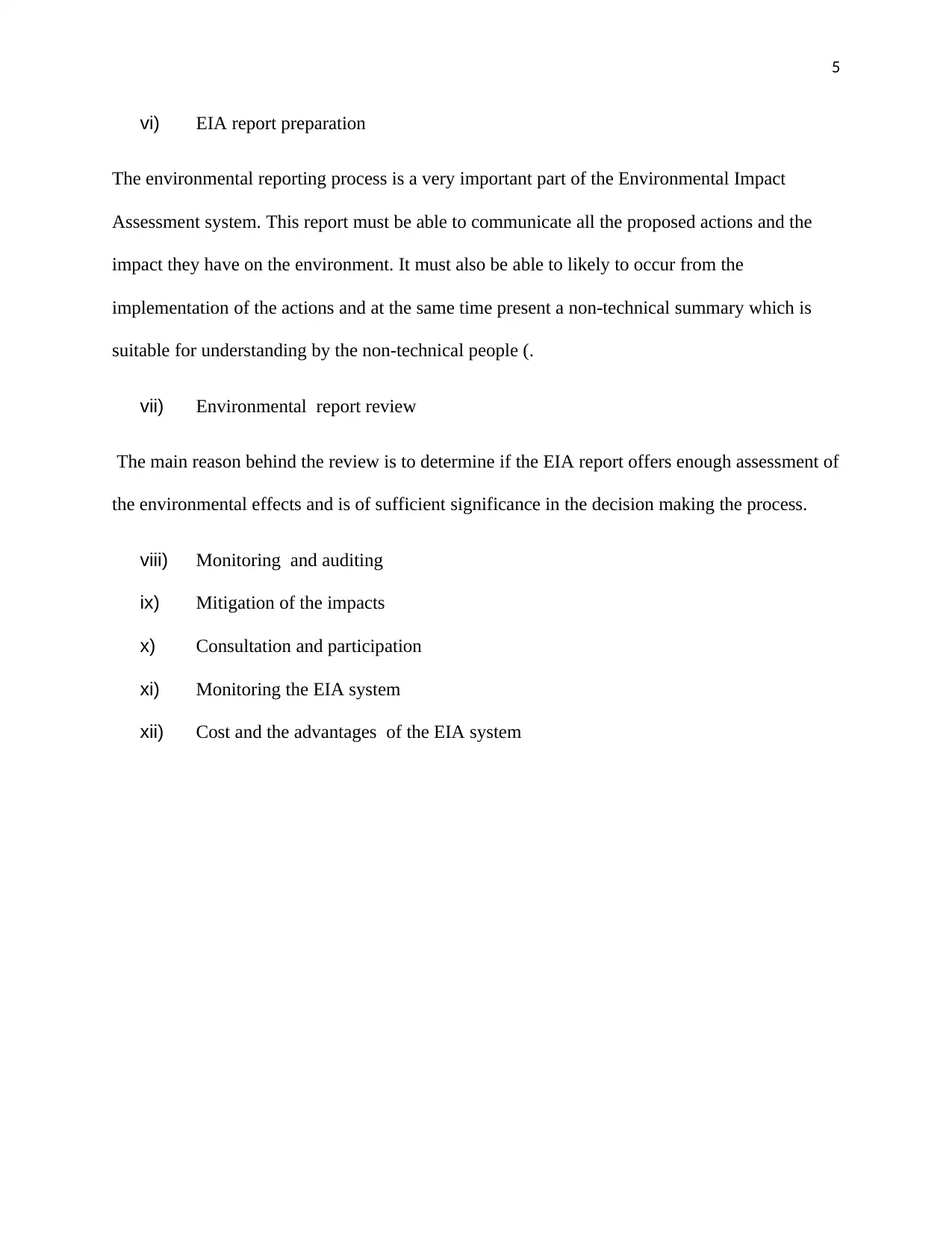
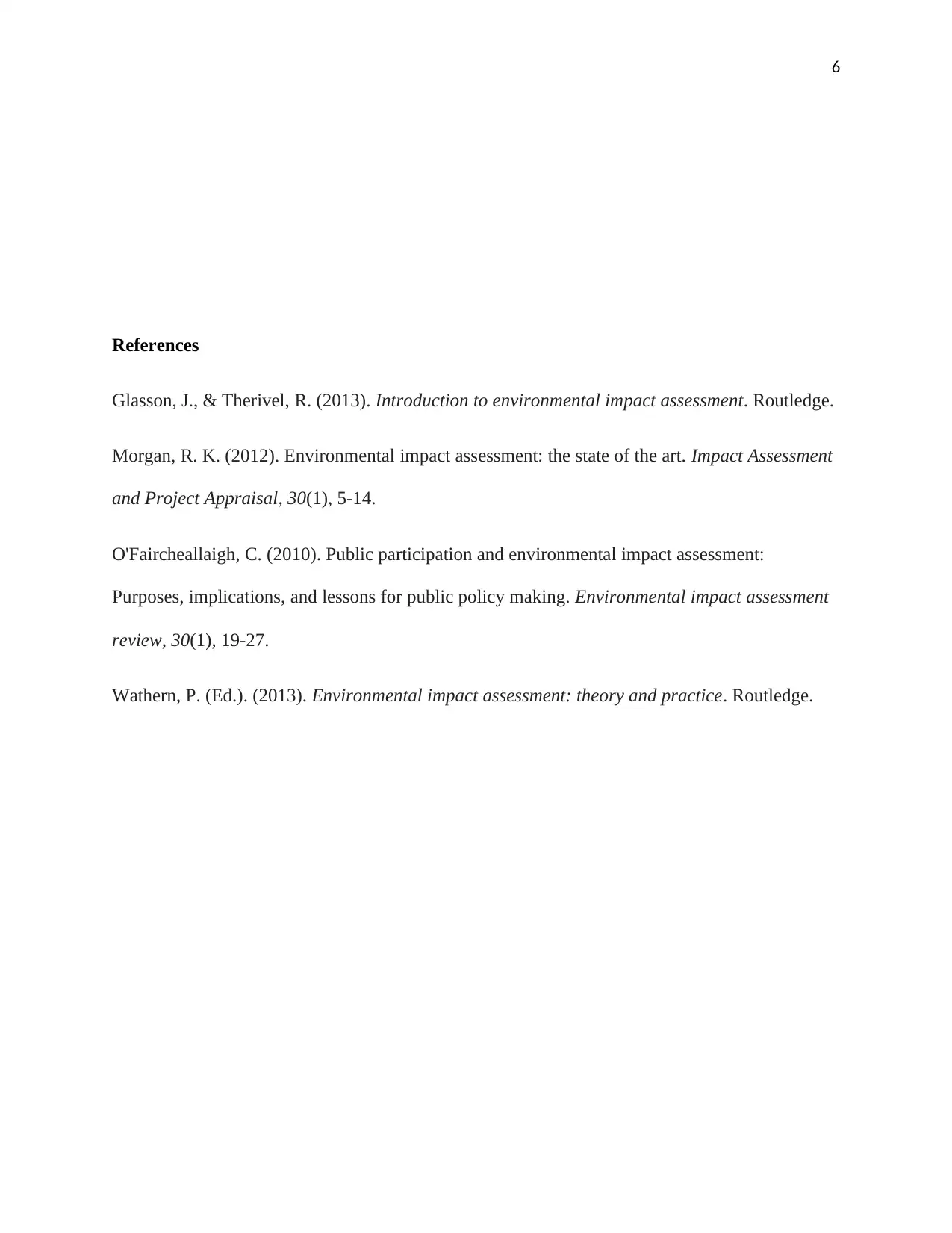






![[object Object]](/_next/static/media/star-bottom.7253800d.svg)